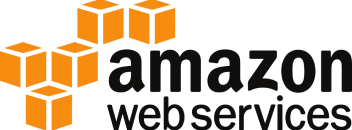When PricewaterhouseCoopers conducted a major global study examining digital transformation back in 2016, they estimated US$420 billion on cost and efficiency gains was at stake. And central to achieving that, alongside digitalisation, was integration – both within and between businesses.
With that amount up for grabs, it is small wonder that the ‘what’s in it for me’ of integration is considered before how integration will be delivered.
That is not to say that the technology isn’t critical. It is. But for many, it’s the second part of a conversation, which starts with the question, “what business benefits will we get out of integration?” that really matters.
Below are the typical benefits that investment in integration brings.
Breathe new life into legacy systems
It’s a universal truth that system upgrades require a significant investment in time, money and effort. Finding a replacement for your business-critical applications requires considerable effort and usually a dramatic overhaul of your existing infrastructure. But the value of having modern, connected systems is undeniable.
By connecting your systems – old and new – to each other, you allow them to communicate and share data traditionally locked into specific solutions. As a result, you boost the value and capabilities of each, while also allowing you to use data across other applications as and when needed.
Before all else, ask (and answer): “What’s in it for me?”
When PlaceMakers undertook a significant project to improve the quality of its customer services, they chose to retain their 27-year-old ERP and integrate it with their myriad other line-of-business applications as well as new technologies to bring it up to speed. The outcome? An award-nominated digital programme that has transformed the face of the business and delivered huge business benefits (which we cover off further down).
Create new digital assets from old
An early thought leader, Aristotle, once said “The whole is greater than the sum of its parts”, and when it comes to integration, he’s right. Uniting your systems provides you with the opportunity to create entirely new, innovative, and high-value products and services.
PlaceMakers is a shining example of this. Their digital programme successfully transformed three major points of contact with their customers. As well as optimising in-store digital processes (such as mobile transaction systems), the programme introduced a transport management solution with end-to-end visibility for staff and customers, and created an online customer channel for purchases, queries and order tracking.
Automate and optimise – at scale
Integration allows you to create a central software architecture connects and shares data seamlessly. When all your applications are talking to one another, it minimises – if not eliminates – the inefficiencies associated with dealing with multiple software solutions. By automating manual tasks, your people can focus on activities that are both productive and valuable. As a result, the business runs more quickly, enjoys more accurate data and experiences less human error.
Ritesh Patel, PlaceMakers’ General Manager Digital and Transformation (NZ Distribution), says the company’s digital programme saves them more than 100 years of labour based on staff time saved by automating previously manual processes.
“We regained the time and capacity for our people to shift from being just order takers to proactive salespeople. They can have real conversations with customers now, which allows them to add more value.”
And to date, PlaceMakers’ digital channel has reduced the annual volume of 1.2 million phone orders placed through its branch call centres by 500,000, issued some 1.4 million automated customer notifications, and supported 1.5 million digital in-branch transactions.
The digitalisation and automation of PlaceMakers’ documentation processes through integration has also saved the business from printing a staggering 11 million pieces of paper – supporting their sustainability goals.
Build closer connections with business partners
For other organisations, the ability to integrate has helped win new business.
Fulton Hogan, a leading infrastructure construction, roadworks and aggregate supplier in New Zealand, Australia, and Fiji, is a prime example. They depend on a complex system of business applications, and to add value, they are constantly introducing new solutions and efficiently consolidating old ones. As well as fine-tuning their own environment, they also need to interact directly with customers’ systems.
For example, one of Australia’s leading water supply companies required integration to automate the work assignment and status updates between the two entities. Another prospective partner, an Australian national wholesale open-access data network, asked Fulton Hogan to engage in a highly competitive pitch to demonstrate their capability to integrate with their work management system.
Leverage the cloud
Modern integration platforms provide the underlying technology which allows your existing systems, people, and processes to connect directly to cloud services. Your organisation can access robust technology, scale at will, and reduce the need for in-house development resources. Applications hosted on-premises can work seamlessly with cloud and hybrid-hosted applications to deliver fast access to the information your organisation needs for decision making and more.
Victoria University of Wellington (VUW) had become increasingly frustrated by usability and accuracy issues in their ageing staff directory solution, and decided to design and implement a new application. By using a cloud integration platform, VUW’s new solution pulls data from five source systems. Users can now rapidly search the collated data on the VUW website and by using the University’s search client.
So, with the benefits clear, does the technology matter?
Integration platforms come with different features, capabilities, and licensing models. All of which impact your IT team, existing environment, outcomes, and ongoing operating expenses. Asking “which technology is right for us?” is critical, as is the validation process, and soul searching about business maturity, choice of partner, and approach. But those factors should all be considered in good time.
There’s no ambiguity in what needs to happen first to lay a solid foundation for a successful integration strategy. Before all else, ask (and answer): “What’s in it for me?”







































